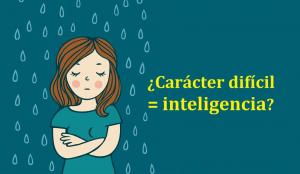The 4 types of introverts: their characteristics
There are many myths about introverts. This is, among other things, because in Western countries introversion is seen worse than its opposite pole, extraversion, and that is why it is not discussed openly and honestly. That is, those who claim to be introverts are relatively rare.
Thus, truly introverted people may not be recognized as such, or in some cases they may be taken by shy people. Lack of knowledge on this issue leads to numerous prejudices about this population group and their preferences and points of view are misinterpreted. And, if we add to this that it is possible to distinguish between types of introverts, things get even more complicated.
- Related article: "The 5 great personality traits: sociability, responsibility, openness, kindness and neuroticism"
What is introversion?
Although introversion is often associated with shyness, they are not exactly the same. Shyness is based on fear and in anticipatory anxiety, and what produces that fear is the possibility of being in the center of attention of someone relevant, or of a group of people. However, introversion is not based on fear and its effects are not restricted to personal relationships.
In reality, introverts are characterized by being almost always focused on their inner world, that is to say, in their musings, their memories and their fantasies. This tendency to base psychological activity on solitary activities or activities that can be carried out in the absence of more people have made the confusion between this type of people and the timid ones become almost irremediable.
However, it must be emphasized that introversion is only a concept to label a certain behavior pattern, and does not point to its causes. For example, you can be an introvert because you have loved the habit of fantasizing and reflecting from the beginning, or you can reach that state because of shyness and social isolation, since there is no alternative but to withdraw on one same.
- Related article: "Differences between extroverts, introverts and shy people"
Types of introverts
To add richness to the debate about what introversion really is, psychologist Jonathan Cheek proposed a classification model of types of introverts to be able to distinguish between various typologies. They are as follows.
1. Mental introvert
The mental introvert is characterized by having a great ability to spin their thoughts together, jumping from one topic to another with great fluency. If we could visualize your mind, this would be a very large space full of all kinds of elements and details with which it is possible to get creative.
Thus, this type of introvert has a predisposition to spend time deep in thought, since it has a mental universe in which it is possible to imagine anything.
2. Social introvert
The social introvert is, mainly, either because of great hostility on the part of others or because of a feeling of insecurity for oneself. In any case the result is the same: a certain degree of social isolation, defense of a relatively large living space (the space around us that must be without anyone else for us to feel comfortable in many contexts.
Thus, this is one of the types of introverts in which what is really sought is loneliness (social status) and not the possibility of reflecting on creating fantasies.
3. Reserved introvert
The reserved introvert is characterized by being cold and distant not because he has a very rich mental world or because he feels violated in social relationships. In this case, the introversion comes as a need to adopt a distant and analytical position in certain situations.
4. Anxious introvert
This is the type of introversion that can cause more frequencies more easily. Why? Because it is linked to stress and anxiety problems. In this case, these are individuals who, out of fear of what might happen if they come into contact with many other people, they decide to isolate themselves and leave the house a little.
On the other hand, the social circle of these types of people tends to be made up of very good friends. However, in front of other people, attempts to avoid dialogue or interaction cause the person to be seen as very unskilled socially, so the fear of giving an image ends up creating it, in the style of the prophecy self-fulfilling.


